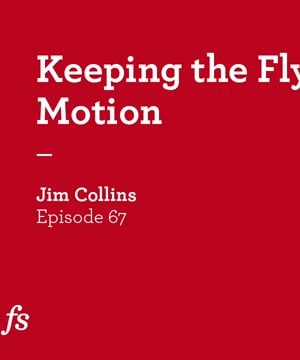albert ellis theory
Sources:
Albert Ellis was a significant figure in the development of cognitive behavioral therapies. He founded Rational Emotive Behavior Therapy (REBT), which is closely aligned with cognitive therapy introduced by Aaron Beck. Ellis's approach revolves around analyzing, disputing, and reframing thoughts to more constructive patterns. A key lesson from his work is the concept of non-perfectionism—acknowledging and accepting imperfections in oneself, others, and life in general to foster happiness and effective thought processes. Brad Jacobs, a successful entrepreneur, particularly highlights how learning from Ellis has influenced his understanding and approach to life and challenges, emphasizing the importance of reframing negative thoughts and not succumbing to the illusion of perfectionism 1.
For further insight, entrepreneur Alex Hormozi discusses Ellis’s impact on decision-making processes, especially in sales. Hormozi references Ellis's ideas on how people’s failure to make decisions often stems from blaming circumstances, other people, or themselves. This understanding can empower sales strategies by targeting these mental blocks and encouraging clearer, empowered decision-making 2.
Thus, Ellis's contributions to psychology, particularly through his development of REBT, underscore the profound influence thoughts have on emotional responses and behaviors, providing valuable tools for personal and professional development.
RELATED QUESTIONSWhat are the key techniques in REBT?
Sources:
Rational Emotive Behavior Therapy (REBT) employs several key techniques aimed at helping individuals address and regulate their emotional and behavioral disturbances. Here’s a summary of the crucial techniques:
-
Identifying Irrational Beliefs: This involves recognizing the thoughts that lead to emotional distress.
-
Disputing Irrational Beliefs: After identifying these thoughts, the next step is to challenge them. This helps to understand and rationalize why the beliefs might be irrational or unhelpful.
-
Replacing Irrational with Rational Beliefs: Once the irrational beliefs are disputed, they are replaced with more rational, realistic thoughts. This helps in changing the emotional and behavioral output.
-
Behavioral Techniques: REBT also uses behavioral strategies such as role-playing or relaxation exercises to reinforce the learning and implementation of new beliefs and responses.
-
Philosophical Changes: It encourages a broader perspective change in life’s philosophy, embracing imperfections and uncertainties without extreme emotional responses.
These techniques aim not only to alleviate symptoms but also to foster long-term improvements by transforming one’s detrimental philosophies on life, self, and adversities into more rational and sustainable ones. These methods help individuals face their fears, challenge negative thoughts, and ultimately modify their underlying assumptions about themselves and their lives[1].
RELATED QUESTIONS-
How effective is REBT?
Sources:
Rational Emotive Behavior Therapy (REBT) has been shown to be highly effective in treating various psychological issues, including depression, anxiety, and specific phobias. Its effectiveness lies in its structured approach to identifying and disputing irrational thoughts and beliefs, which in turn helps to reduce emotional distress and behavioral problems.
-
Depression and Anxiety: REBT has shown substantial positive results in reducing symptoms of depression and anxiety. By addressing and reshaping irrational and harmful thought patterns, patients report significant improvements in mood and reduced anxiety levels[1].
-
Suicidal Ideations and Severe Depression: Studies have indicated that REBT can dramatically reduce suicidal thoughts and severe depression. Following sessions of REBT, individuals have exhibited remarkable recovery rates, indicating its potency in handling even profound mental health challenges[1].
-
Longevity of Benefits: Unlike some traditional therapies, the benefits of REBT extend well beyond the end of therapy sessions. Patients often experience long-term improvements in their mental health, underscoring the lasting impact of the cognitive techniques learned during therapy[2].
-
Insomnia Relief: Specifically designed versions of REBT, like Cognitive Behavioral Therapy for Insomnia (CBTi), have proven as effective as sleep medications in the short term and far better in the long term due to the durability of the therapeutic effects. This treatment changes beliefs, habits, behaviors, and reduces stress related to sleep, providing sustained relief from insomnia[2].
Overall, the application and results of REBT in various psychological conditions highlight its effectiveness and the significant positive impact it can have on individual mental health and well-being.
RELATED QUESTIONS-
Can you give examples of REBT techniques?
Sources:
Rational Emotive Behavior Therapy (REBT) utilizes several distinct techniques to help individuals manage irrational beliefs and achieve emotional well-being. Here are a few notable examples:
-
Disputing Irrational Beliefs: A key technique in REBT involves challenging and disputing irrational beliefs. This helps to weaken these beliefs and replace them with more rational and adaptive thoughts.
-
The ABC Model: This fundamental REBT technique revolves around three core elements:
- A (Activating Event): Identifying the event or situation that triggered the emotional response.
- B (Beliefs): Examining the beliefs about the activating event.
- C (Consequence): Understanding the emotional and behavioral consequences that result from the beliefs.
-
Rational Emotive Imagery (REI): In this method, individuals are asked to vividly imagine one of their worst-case scenarios happening and then practice changing their irrational thoughts to more rational ones in response to this scenario.
-
Role Playing: This involves acting out scenarios that might trigger irrational beliefs, which helps individuals practice their responses and improve their emotional reactions.
-
Homework Assignments: Assigning homework that encourages individuals to apply the methods learned during therapy in real-world situations. This helps to reinforce new skills and strategies outside of the therapy sessions[1].
These techniques aim to empower individuals by teaching them how to identify irrational beliefs, understand their emotional impact, and replace them with rational thoughts that lead to healthier emotional outcomes.
RELATED QUESTIONS-
Who are some experts in REBT?
Sources:
Here are some experts in Rational Emotive Behavior Therapy (REBT):
-
: A distinguished psychologist and director of Changeways Clinic in Vancouver. He has authored several books on mental health and specializes in the impact of lifestyle choices and thinking patterns on mental well-being.
-
: Although primarily a behavioral sleep medicine expert, Dr. Troxel has a rich background in psychology and has explored various aspects of mental and emotional health.
-
: Known for his work in Acceptance and Commitment Therapy (ACT), Dr. Harris's expertise extends to various therapeutic approaches, including techniques that overlap with REBT.
-
: A Professor of Psychology who has extensively researched emotional functioning and depression, areas closely linked to the principles of REBT.
These professionals have contributed significantly to the field of psychology with interests and expertise that align with or overlap with the principles of REBT.
RELATED QUESTIONS-
Tell me about Cal Newport
Sources:
is an American non-fiction author and an associate professor of computer science at Georgetown University. He is widely recognized for his work on the impact of technology on society and the concept of deep work, which emphasizes focused and undistracted work to achieve higher productivity and satisfaction.
Cal Newport has made several podcast appearances to discuss his ideas and has authored various books that contribute significantly to understanding work patterns, technology, and their interrelationships with human efficiency. His ideas are influential in the realms of productivity, digital wellness, and career development.
RELATED QUESTIONSwho is naval ravikant?
Sources:
is an Indian-American entrepreneur and investor. He is best known as the co-founder, chairman, and former CEO of AngelList, a platform for startups, angel investors, and job-seekers looking to work at startups. Naval Ravikant is highly regarded in the tech and venture capital communities for his insights on investment strategies, decision-making, and philosophy on wealth and happiness. He's also made several podcast appearances, sharing his thoughts on entrepreneurship, investments, and personal development.
RELATED QUESTIONSWhat are Naval's main ideas?
Sources:
Naval Ravikant has shared several profound ideas and philosophies across various podcasts. Here are some of his main concepts:
-
Technology and Global Education: Naval has expressed a desire to create a low-cost, rugged Android tablet filled with learning apps for children worldwide, aiming to provide educational tools that are easily accessible 1.
-
Creativity and Independence: He views creativity as not merely a recombination of existing ideas but as a unique capability that drives profound changes, such as transforming landscapes or significantly impacting industries. Rather than mixing things together, creativity involves producing something entirely new and impactful 2.
-
Science and Truth: Naval is fervent about science, which he equates with the pursuit of truth. He believes that understanding what constitutes true scientific inquiry is crucial and criticizes the misuse of "science" as a term in popular discourse 3.
-
Leverage and Modern Work: He discusses the modern concept of leverage, which he links to opportunities that arise from products with no marginal cost of replication, like digital products and media. Naval believes the internet has shifted traditional employment structures, pushing towards more individual entrepreneurship and self-reliance 4.
-
Mental Models and Learning: According to Naval, mental models are essential for understanding and implementing knowledge effectively. He also speaks about the power of inversion, avoiding wrong approaches rather than only seeking the right ones 5.
-
The Importance of Peace and Well-being: While discussing wealth creation, Naval also emphasizes the significance of inner peace and happiness, viewing them as intrinsic values that complement external achievements 3.
These ideas reflect Naval's broad thinking on technology, education, creativity, and personal development, often intersecting with his interests in philosophy and economics.
RELATED QUESTIONS-
How does Naval define true creativity?
Sources:
Naval Ravikant defines true creativity as an act that cannot be merely reduced to observation or a direct product of induction or specific algorithms. It involves more than just combining existing ideas and elements. Rather, true creativity is an emergent phenomenon that cannot be fully explained by natural processes alone. Naval uses the development of Manhattan and its skyscrapers as an example, noting that such transformation demands an invocation of true creativity, implying that such profound changes and innovations are beyond simple recombination or natural progression 1.
RELATED QUESTIONSWhat does Naval say about natural processes?
Sources:
Naval Ravikant discusses the limitations of natural processes in relation to creativity and human capacity. He engages in a discourse, highlighting that while certain aspects of human nature, like our thoughts and even our creative potential, are often thought to be determined by our genes and the environment, there exists an unpredictable element that transcends simple hereditary or environmental factors. This unpredictable nature of human creativity and thought is something that cannot entirely be accounted for by genetic makeup or the environment alone. For Naval, creativity is not solely a product of natural processes but involves a significant degree of emergent, individual uniqueness that isn't directly predictable from nature itself 1.
RELATED QUESTIONSHow does the environment shape creativity?
Sources:
The environment plays a significant role in shaping creativity by providing novel stimuli and reducing familiarity, which can lead to new and original thoughts. explained that novel environments, like beaches or unusual settings, can activate different brain circuits, making one more receptive to new ideas. This happens because the brain, finding itself in a new or unstudied environment, tends to absorb more information and become more open to abstract thinking. Newport highlights that conventional, familiar environments might focus our thoughts on routine tasks or distractions rather than fostering creativity 1.
Furthermore, noted that the physical state of your environment (like a messy or tidy office) can also influence creativity. A messy environment might encourage a more free-form thinking process, leading to creativity, while a tidy environment tends to facilitate focus and productivity. This effect is attributed to how different environmental cues can initiate chains of thought, potentially leading to unexpected and creative insights 2.
In conclusion, both the novelty of an environment and its physical state can significantly affect creative output by altering how the brain processes information and what it focuses on.
RELATED QUESTIONSWhat environments boost creativity?
Sources:
Various environments can significantly boost creativity by providing unique stimuli or fostering an atmosphere conducive to novel thinking. Here are some environments identified by trusted experts that enhance creativity:
-
Novel and Stimulating Environments: Places that offer new sensory experiences such as sights, sounds, and smells can activate different brain circuits, making individuals more receptive to new ideas. Beaches, for instance, provide a vast, open vista and unique sounds, making them ideal for stimulating creative thoughts 1.
-
Travel: Journeying to new locations can boost creativity by exposing individuals to different cultures and experiences that challenge the familiar. emphasizes that traveling can significantly enhance creativity 2.
-
Artistic and Inspiring Settings: Environments filled with art or creative works can stimulate the mind. Being surrounded by items or artifacts that fuel joy and creativity can be particularly beneficial 2.
-
Messy or Organized Workspaces: Depending on the individual, a messy workspace may encourage free-form thinking and creativity, while a tidy workspace might facilitate focus and structured thinking. This effect pertains to the environmental cues that lead to diverse thoughts 3.
-
Dedicated Creative Spaces: Some individuals find it beneficial to have a dedicated studio or a specific mileage away from home to dive deep into the creative process. This physical separation from daily routines can facilitate a mental transition into a more creative mindset 4.
-
High Ceilinged Environments: Known as the cathedral effect, working in environments with high ceilings can encourage more abstract and expansive thinking, just as lower ceilings may promote more detailed and analytical thoughts 5.
These environments leverage different mechanisms to stimulate creativity, ranging from avoiding the familiar to embracing novel stimulation.
RELATED QUESTIONS-
What else has Naval talked about?
Sources:
Naval Ravikant has discussed a wide array of topics across different platforms. Here are some key subjects he has covered:
-
Learning and Knowledge: Naval emphasizes the importance of learning from diverse industries and combining that knowledge creatively. He advocates for reading books until something valuable is learned, and not necessarily finishing them if they don't continue to provide value at that moment 1.
-
Happiness and Inner Peace: He extensively discusses strategies for achieving happiness and inner peace, distinguishing between fleeting pleasures and true, sustainable happiness which comes from deep understanding and peace within oneself 2.
-
Investing and Business: Naval is an experienced investor and shares insights on successful investment strategies, particularly in technology and startups. He discusses the importance of judgment and decision-making in investing, and how fostering a network of contrarian, insightful thinkers can enhance one's investment decisions 3.
-
Science and Philosophy: He expresses a deep reverence for science as a tool for advancing humanity and explores philosophical topics such as the nature of truth and the mystery of existence. Naval stresses the importance of understanding science beyond its practical applications, viewing it as a pursuit of truth 4.
-
Education and Learning: Naval believes in optimizing education to focus on practical life skills such as public speaking, financial literacy, and understanding human relationships, rather than rote memorization of facts that are easily searchable in today's digital age 2.
-
Technology and Innovation: His discussions often touch on the impact of technology and innovation on society, exploring topics ranging from artificial intelligence to the ethics and future implications of tech advancements 5.
These discussions reveal Naval's multifaceted interests and his approach to melding practical business acumen with deeper philosophical inquiries.
RELATED QUESTIONS-
best decision making processes
Sources:
Experts discuss various effective decision-making processes and methods, emphasizing the importance of selecting the right process for the specific decision context.
-
Different Processes and Mediums: Eugene Wei stresses the significance of the process or medium chosen for decision-making. He mentions various methods like writing detailed memos (e.g., Amazon's use of six-page memos), Socratic debate, prototyping (common in tech companies like Apple), and visual aids like charts and graphs. Each method can lead to different outcomes and is chosen based on the specific needs of the decision to be made 1.
-
Rational Decision-Making: Lara Buchak and Sean Carroll discuss rational decision-making in the context of bounded rationality and satisficing, which suggests that humans often opt for a "good enough" option rather than the optimal one due to cognitive limitations. This approach is practical in real-world scenarios where time and information are limited 2.
-
Voting Systems and Debiasing: Daryl Morey explains using structured voting systems and debiasing techniques in team decision-making contexts, especially in management settings like the NBA. This includes pre-meeting votes based on shared data to minimize groupthink and leveraging diverse viewpoints 3.
-
Long-term Mindset and Emotion Handling: Kunal Shah highlights the importance of having a long-term mindset and consulting people with expertise in making long-term decisions. He also warns against using emotions as a basis for decision-making, suggesting they are better suited for identifying problems rather than solving them 4.
-
Assessment and Preparation: Hasard Lee delineates the components of decision-making like preparation and multi-aspect assessment, particularly in complex situations requiring coordination of multiple elements (e.g., military operations). This approach involves clarity in objectives, understanding of available means, and risk assessment 5.
These insights indicate a diversity of approaches tailored to different decision-making scenarios, highlighting the adaptability needed to optimize decision-making across various contexts.
RELATED QUESTIONS-
What are some real-world examples?
Sources:
Here are real-world examples of decision-making processes discussed by experts across various contexts:
-
Job Interview Dynamics: In a job interview scenario, Michael Mosenbaum shares an experience where personal interests, like a mutual liking for the Washington Redskins, influenced the hiring decision more than formal credentials 1.
-
Investment Decisions at Sequoia: Luciana Lixandru explains how Sequoia makes investment decisions by analyzing potential companies globally, looking to identify a leader in a specific category. They utilize insights from both the US and European markets to support their selection 2.
-
Amazon’s Six-Page Memo Culture: Eugene Wei mentions Amazon's unique approach to decision-making through detailed written memos followed by in-depth discussions, emphasizing how different mediums can impact decisions 3.
-
Venture Capital Decision-Making: David Tisch describes an "advocacy driven" approach in venture capital, where someone in the team must champion a deal. The team then collaborates to build conviction around the decision 4.
-
Corporate Meetings and Problem-Solving: Shane Parrish talks about introducing safeguards in meetings by clearly defining problems and splitting discussions into multiple sessions to ensure focused decisions without biases 5.
-
Probability in Medical Decisions: Jim Collins shares his personal experience of using a decision tree in a critical medical scenario involving cancer, demonstrating the application of probability and statistics in decision-making 6.
These examples illustrate how decision-making processes are adapted in various real-world contexts, from corporate settings to personal health decisions.
RELATED QUESTIONS-















